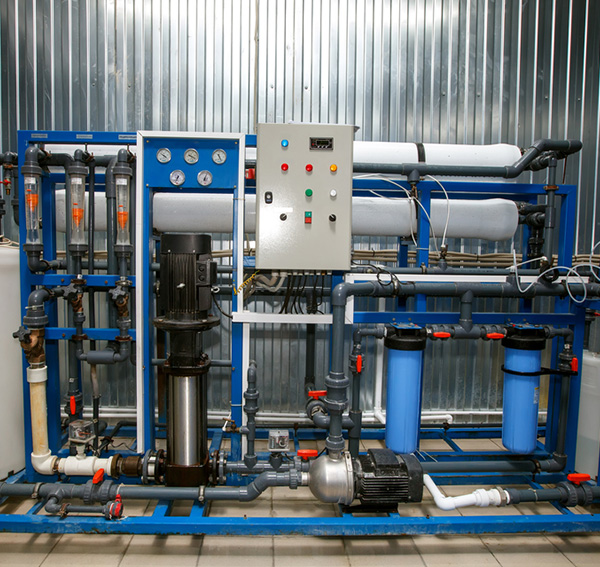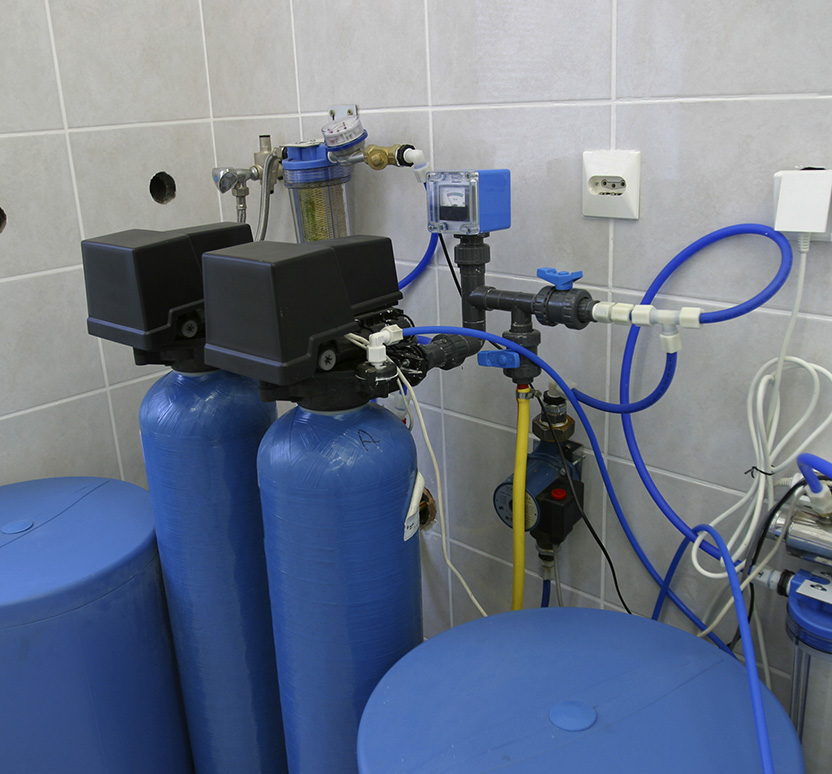If your sinks and bathtubs have stains or buildup... if you have to wash your hair or clean your dishes with a lot of soap... Alternatively, if your water tastes or smells strange, you most likely have hard water.
Hard water minerals cause yellow stains on plumbing fixtures and are deposited as scale, ultimately clogging pipes and shortening the life of appliances like washing machines, water heaters, and dishwashers if not treated. Scale deposits not only reduce the performance of these appliances, but they also cost you money because they boost your energy and maintenance bills.
Soft water makes a difference you can see and feel…
Soap and shampoo lather better and leave no marks or buildup on sinks and bathtubs.
Clothes are cleaner, smoother, and lighter as they come out of the dryer.
Water heaters and appliances last longer when they are well-maintained.

Activated carbon filters
Catalytic carbon filters
Acid neutralizing filters
Arsenic filters
Nitrate filters
Chlorine and chloramine Filter for city water
Soda ash is sodium carbonate, which has the chemical formula Na2CO3. It has a lower acidity than sodium bicarbonate (baking soda), which has the chemical formula NaHCO3. The aim of sodium carbonate is to raise the pH level. It is used to boost the pH of acidic waters in water treatment.
A potent oxidizing agent, hydrogen peroxide (“H2O2”) is much more powerful than aeration, chlorine, or potassium permanganate. Hydrogen peroxide breaks down into oxygen and water, leaving no chemical traces behind. Hydrogen peroxide systems are an excellent alternative for issue well water containing iron, iron bacteria, manganese, and/or “rotten-egg” sulfur odor “H2S” (hydrogen sulfide gas).
As peroxide is added to water, it releases a significant amount of dissolved oxygen, resulting in a strong oxidizing effect. Tannins are oxidized, and coliform and iron bacteria are destroyed. This form of iron filter system efficiently and effectively manages the worst types of water.
The iron, manganese, and sulfur odors are oxidized by peroxide to a solid state that the catalytic carbon can destroy. The hydrogen peroxide is easily eliminated by the catalytic carbon media in many applications, so there is no need for a contact tank.
Eliminate sulfur & other odors.
Remove iron, manganese
Kill iron bacteria.
No chemical residuals.
Enjoy low maintenance.
Since the late 1800s, ozone has been used to purify water. Ozone is a naturally occurring gas that is more effective and less expensive than other chemical water treatment methods.
Natural safe Ozone Gas
Ozone gas produced on site from air
No chlorine or chemical residuals
Eliminate hydrogen sulfide “rotten-egg” odors
Kills iron bacteria and coliform bacteria
Removes hydrogen sulfide “rotten-egg” odors
Great for disinfecting surface water from lakes and rivers
Water filtration is given at the point of entry to your home with whole house water filters. Since safe, filtered water emerges from any water source in the house, they help to ensure quality water in your home. Drinking and showering in dirty water can be dangerous, so using a whole house water filter can help.

Ultraviolet light is a spectrum of light that is only below what the human eye can see. At the germicidal wavelength of 253.7 nanometers, ultraviolet light changes the genetic (DNA) material in cells, preventing bacteria, viruses, molds, algae, and other microorganisms from reproducing. Since the microorganisms are considered dead, there is no chance of disease from them. UV filtration is used to destroy or inhibit the growth of microorganisms, eliminate ozone, chlorine, and trace organics, and minimize total organic carbon as a pretreatment and/or posttreatment phase (TOC). The water is exposed to ultraviolet light waves at a controlled rate during UV sterilization. The bacteria absorb UV radiation, which causes their DNA to be destroyed or inactivated, preventing them from reproducing. UV systems have the potential to destroy 99 percent of bacteria in the water.
UV disinfection makes use of a UV light source wrapped in a clear protective sleeve. It's set up so that water can flow into a flow chamber, where UV rays are admitted and absorbed. For microorganisms, the UV-C spectrum (200 to 280 nanometers) is the most lethal wavelength range. As ultraviolet energy is consumed by bacteria and viruses' reproductive systems, the genetic material (DNA/RNA) is rearranged, and they are no longer able to replicate. As a result, they are considered dead, and the possibility of disease is no longer present.